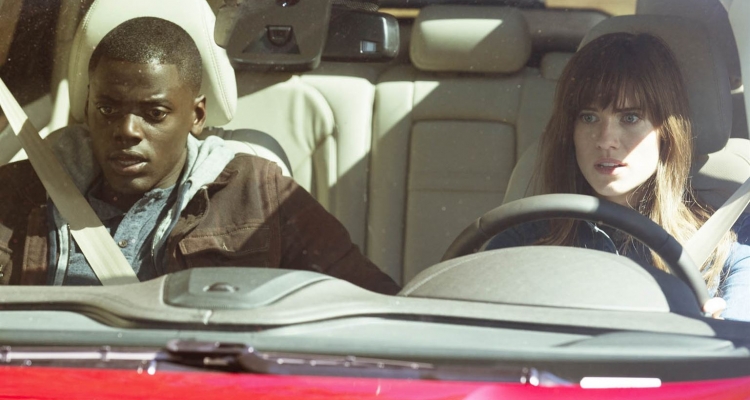I’m right on top of things calendar-wise, right?… I could have easily posted a best top ten list in November, as I had seen most of what I wanted to see, but being a little late to the party meant that I could re-watch, ponder, decipher, what really merited inclusion and what didn’t. It’s become a recurrent trend every year for journalists to look back at the movies that were released and, well, complain. How many articles have you read where the writer said something to the effect of “don’t you remember the days when they used to release great movies”? Yes, 2017 was not a breakthrough year for cinema as it was filled with countless cash cow remakes, reboots, sequels, superhero flicks, not to mention reboots of reboots (I’m looking at you “Spider-Man: Homecoming“), but, guess what? I still managed to find 11 indisputably great movies, not just that, I started off with a list of 30+ movies that could have easily made this list.
READ MORE: Best Of 2017 Rewind: Every Best Of The Year List We Made
What was astounding about this year’s crop of movies was just how good they were despite people’s misconceptions that we are somehow living in this kind of cinematic doomsday filled with one dreadful movie after another being released on a weekly basis. Quite the contrary, if you look beyond the American studio system and seek stuff in the foreign and indie circuits then you’re in for an abundance of artful treats.
READ MORE: The Playlist Team’s Best Films Of The Year
The following are 11 great movies that were released this year.
 11. “Faces Places” (Agnes Varda)
11. “Faces Places” (Agnes Varda)
Far-removed from her Nouvelle Vague heydays, Agnès Varda teams up with the celebrated photographer J.R. and heads on a road trip through a rural France that is rarely depicted onscreen. JR, a street artist well-known for his photography on random French murals, decides to take Varda on a trip to meet the blue-collar. It’s not just the beautiful art, which focuses on the forgotten, that strikes a major chord with us, it’s also the loose, freewheeling conversations between both artists, and the populace of the streets, corners, farms they visit. The timeless themes touched upon range from the jobs, families, philosophies, and histories of these beautifully complex people. There’s no politics, just life itself. It’s a disarmingly charming film that’s impossible not to like, spryly light on its feet and “Faces Places” even has time to include a final, touching coda involving Jean-Luc Godard and the friendship, or lack thereof, that he and Agnes have had over the course of 60 years of cinematic history. At 89 years of age, Varda doesn’t seem to want to stop, she releases these non-fiction treats every few years and puts to shame most of the supposed auteurs that are supposed to be at the peak of their careers.
10. “Good Time” (Josh and Ben Safdie)
A botched bank robbery starts off the madcap lunacy of the Safdie Brothers’ “Good Time.” Constantine Nikas (Robert Pattinson) has his brother land in jail and, to try and find bail money, embarks on the most surreal of Odysseys in NYC’s underworld. Think Scorsese’s “After Hours” on coke. The adrenaline filled night is filled with time-capsule worthy moments filled with madness and the most disturbing of violence. This is a richly textured genre exercise that is filled with indelibly unforgettable images, many of which are hard to take. The Safdies have always been masters at discomfort and “Good Time” is surely no exception, here they create their most fully realized movie by invoking a cinematic style, but still maintaining the docu-style realism that has always been at the forefront of their work. Robert Pattinson is an enthralling lead, he builds up his character through facial expression and bottled-up anger which lingers inside of him in every scene. He’s in survival mode throughout, but, thanks to the Safdies, so are we.
 9. “Wakefield” (Robin Swicord)
9. “Wakefield” (Robin Swicord)
The most underrated and underappreciated movie of the whole year.”Wakefield” is a movie for its time, as Howard Wakefield, a New York City lawyer, decides to shelter himself in the attic of his home for weeks. He does come out in the daytime when his family is at work and school. It’s a withdrawal from society that matches the scary era we live in. This would not be as fascinating if its central performance wasn’t as fully fleshed out as Bryan Cranston makes it. In the best performance of his career on the silver screen, it’s made even more impressive by the fact that he is mostly alone for the majority of the film, but what he does is never less than riveting. He infuses his character with humor, heartbreak, and scathing cynicism. His Howard Wakefield is not necessarily a man one is supposed to like and, in many ways, he represents a kind of anti-hero that not many actors could pull off. Swicord, mostly known for her screenplays such as “The Curious Case of Benjamin Button” and “Little Women,” shows a surprising amount of restraint compared to her previous works. Here she makes a film stripped of artifice designed to ponder deep, humane questions about existence. With an ending meant to spark debate and cause both anger and provocation in its audience, Wakefield fights formula and creates its own unique cinematic language.

